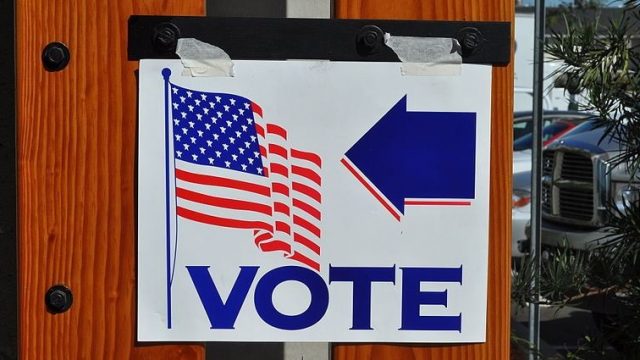SAB/VNL Poll: Majority Opposes Measure 5, Plurality Opposes Measure 1

The two hottest measures on the statewide ballot this cycle are, without a doubt, Measures 1 and 5.
Measure 1 would add this statement to the state constitution: “The inalienable right to life of every human being at any stage of development must be recognized and protected.” Supporters say it will protect North Dakota’s existing laws from courts which have found a right to an abortion in the state constitution. Opponents say it will have unintended consequences, creating havoc with IVF and end-of-life issues.
Measure 5 would create a constitutional trust fund by diverting hundreds of millions of tax revenues per year. The trust fund would be overseen by the State Industrial Commission (the Governor, the Attorney General and the Ag Commissioner) who would be mandated by the measure to spend at least 75 percent of the revenues every year.
The SAB/Valley News Live poll was conducted by DFM Research out of Minnesota. It polled 430 “certain” or “very likely” voters between October 13 and October 16 with a margin of error of +/- 4.7 percent. Here’s what our polling showed for support for these two measures.

Measure 5
Earlier this month Forum Communications and the University of North Dakota released polling showing the “yes” vote on Measure 5 at 44 percent and the “no” vote at 37 percent. Despite trailing, opponents of the measure told me they were ecstatic about the poll. They said it was the first time they’d seen Measure 5 poll with less than majority support, and felt the trend was heading in their direction.
That polling was taken between September 26 and October 3. Our polling was conducted between October 13 and October 16, and the results indicate that the Measure 5 opponents are right. The trend definitely seems to be for the “no” vote.
Overall, our polling showed majority support for a “no” vote at 55 percent with the “yes” vote getting just 34 percent, a 21 point differential with 11 percent undecided.
Breaking it down by gender, 61 percent of men and 51 percent of women oppose the measure.
Looking at age, the two sides are essentially tied among voters 18-39, but the “no’s” have at least 60 percent of respondents age 40 and older.
Geographically, the “no” vote has majority support in every region of the state. The “yes” vote has its strongest level of support in the eastern cities, but even there they don’t break 40 percent.
By political parties, Democrats support the measure 50 – 44, but the “no” vote has majorities among independents and Republicans.

Measure 1
The polling results on Measure 1 are where I have the least amount of confidence in my polling. Indeed, our pollster warned that surveying controversial social topics like abortion and gay marriage can be tricky because of something called the social desirability bias. People may tend to want to present their views to someone else – like someone surveying them via telephone – differently from how they’ll actually vote.
People tend to be more shy about saying they’re pro-life or pro-choice as opposed to saying whether they support a Republican or Democrat candidate. This can skew results significantly, and it isn’t always easy to tell which way. Our polling may be understating the pro-life choice, or it may be overstating it.
I do feel it is the most accurate snapshot we can provide.
But our survey of voters in North Dakota found a plurality, or 45 percent, opposing Measure 1 while 39 percent said they support it.
Men were split on the measure – 43 percent were for it, 42 opposed – while women came down squarely on the no side 48-36.
The opposition to the measure enjoyed a plurality among all age groups. Their strongest support came from voters aged 40-65. Support for the measure was consistently 39-40 percent among all age groups.
Geographically, opposition to the measure was strongest in the state’s rural areas. In eastern cities 58 percent of respondents opposed the measure, while in western cities 52 percent opposed. Respondents from the eastern and central rural areas were pretty evenly split on the measure, but 52 percent of respondents from western rural areas support it.
A strong majority of Democrats – 62 percent – as well as 44 percent of independents opposed the measure. I’d have expected a stronger majority of Republicans to support the measure, but just 55 percent said they were voting yes.
The Raw Data




